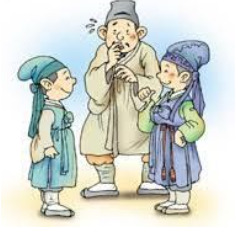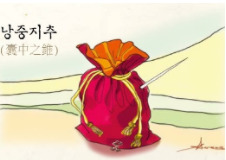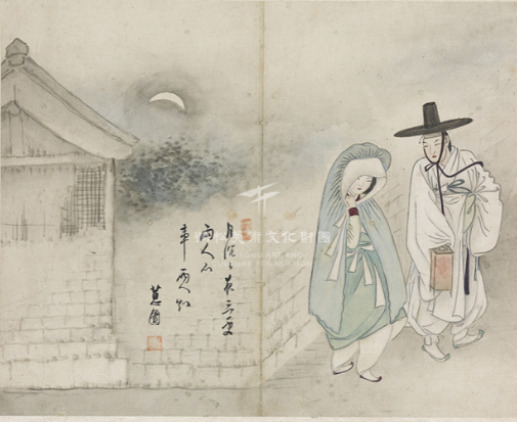Text
Event Posts + Culture/History Posts Masterlist
<Event Posts>
[2019]
Korean Independence day
추석(Chuseok)
추석 송편 특집 (Chuseok Songpyeon special)
개천절 Gaecheonjeol
Hangeul Day 한글날
Dokdo Day 10/25
[2020]
March 1st movement day (3.1절 Samiljul)
Corona Virus-what’s going on + Vocab List
Sewol Ferry Disaster (세월호 참사)
The April Revolution (4.19 혁명)
May 18th Democratization Movement (5.18)
Chobok(초복) First of the three dog days + Vocab List
제헌절 (Constitution Day)
Korean Independence Day 8.15 광복절
추석(Chuseok)
10/9 한글날
Halloween Post-Korean Ghosts and Monsters
동짓날 (Winter Solstice)
<Korean Culture & History>
Culture: Popular Korean Apps
History: Where to Learn
Culture: Korea’s flag, Taegeukgi
Art: Interview with a Korean Traditional Music Student
Learn Korean with K-dramas – Hotel Del Luna
Korean Slang 유행어
Kim Hongdo-Artist of Korea
History Traveling: Trip to Deoksugung palace
Korean Names
Korean Slang-Texting
Korean Surname Clans
Korean Snacks – Choco Pie (초코파이)
Korean Culture- K-pop
Learn Korean with Songs- Twenty Three (스물셋, IU)
Dalgona Coffee 달고나 커피
Korea’s hero, Admiral Yi Sun Sin (이순신 장군)
Korean Movie: Extreme Job (극한 직업)
Korean Gastroventures (맛집탐방)
Learn Korean with Songs-Butterfly(BTS)
Korean Movie-Dongju; The portrait of a Poet (동주)
Hanbok(한복) Korean Traditional Clothes
What’s on Korean Coins and Bills
Life as a Korean Student-Reading(Studying) room 독서실
Korean’s love of rice (밥심)
The climate of Korea (한국의 기후)
Korean Tales(전래동화)
A painter of the Joseon Dynasty, Shin Yun-Bok (신윤복) + Vocab
일월오봉도 (Ilwol Obongdo, painting only for the King)
Introducing Kimchi
돌잔치 (First Birthday Party)
Life as a Korean Student- Academic Grading system (9등급제)
Constellation and Korean Year counting method
Korean Traditional Poem, Sijo (시조)
Korean Traditional Beverages (한국의 전통 음료)
Korean Family Names (우리나라 성씨 소개)
Introducing Ramen in Korea (우리나라 라면 소개)
Korean Provinces and Cities
애국가 (Korean National Anthem)
Twelve Months in Pure Korean (순우리말) and more
Korean Age
Popular Study Apps in Korea (공부 앱)
#Korean#Korean Culture#Korean History#Kpop#Culture#History#Languages#Learn Korean#Study Korean#Masterlist
118 notes
·
View notes
Text
VOCABULARY LISTS: MASTERPOST
[Vocabulary by Topics]
-Vocabulary: Occupations
-Vocabulary: Jobs (occupations 2)
-Vocabulary: Colors
-Vocabulary: Family
-Vocabulary: Places
-Vocabulary: Numbers
-Vocabulary: School/School subjects
-Vocabulary: Vegetables
-Vocabulary: Food
-Vocabulary: Daily objects
-Vocabulary: Clothes
-Vocabulary: Emotions
-Vocabulary: Space
-Vocabulary: Garden
-Vocabulary: Animal Sounds
-Vocabulary: Positive Emotions
-Vocabulary: Airport, Airplane
-Vocabulary: Body parts 1
-Vocabulary: Body parts 2
-Vocabulary: Birthday
-Vocabulary: Everyday objects at home
-Vocabulary: Taste
-Vocabulary: Weather
-Vocabulary: Time
-Vocabulary: Shapes
-Vocabulary: Transportation
-Vocabulary: University Life
-Vocabulary: City
-Vocabulary: Chemistry
-Vocabulary: Electronic Devices
-Vocabulary: Countryside
-Vocabulary: School 1
-Vocabulary: School 2
-Vocabulary: Trip
-Vocabulary: Medical 1
-Vocabulary: Medical 2
-Vocabulary: Fashion
-Vocabulary: Snow
[Hanja, Idioms, Proverbs]
-Hanja Idioms (사자성어) -ㄱ
-Hanja Idioms (사자성어) - ㄴ
-Korean Proverbs and Vocabulary
-Learn Korean with Hanja - 화 (化)
-Korean Idioms
[Vocabulary by parts of speech]
-Vocabulary: Verbs 1
-Vocabulary: Verbs 2
-Vocabulary: Verbs 3
-Vocabulary: Noun + Verb set
-Vocabulary: Adjectives
-Vocabulary: Active and passive verbs
updated 2021/03/19
#한국어 공부#korea#langblr#learn korean#study korean#한국어 어휘#한국어#korean vocabulary#korean#vocabulary#masterpost#languages
1K notes
·
View notes
Text
Vocabulary - Verbs 3
*All verbs below are in original form(dictionary form).
존재하다 : to exist
선언하다 : to declare, proclaim
목격하다 : to witness
제안하다 : to suggest
조언하다 : to advise
개입하다 : to intervene
헌신하다 : to devote
축하하다 : to congratulate
환영하다 : to welcome
접근하다 : to approach
투자하다 : to invest
개선하다 : to improve
응원하다 : to cheer, support
설명하다 : to explain
오해하다 : to misunderstand, misconceive
해결하다 : to resolve
조절하다 : to adjust
계획하다 : to plan
보호하다 : to protect
조사하다 : to investigate
확인하다 : to check, verify, confirm
출발하다 : to depart, set off, start
도착하다 : to arrive, reach
설득하다 : to persuade
양보하다 : to yield, give way
희생하다 : to sacrifice
쟁취하다 : to achieve, win
야기하다 : to cause, bring about
실수하다 : to make a mistake
긍정하다 : to affirm
부정하다 : to deny
생산하다 : to produce
소비하다 : to consume, spend
인정하다 : to admit
소유하다 : to own, possess
봉사하다 : to serve, do volunteer work
유지하다 : to maintain
보조하다 : to assist
인용하다 : to quote, cite
대표하다 : to represent
선택하다 : to choose, select
거절하다 : to reject, refuse
촉진하다 : to promote, accelerate, boost
요구하다 : to demand, ask
사과하다 : to apologize
추측하다 : to guess, suppose
간섭하다 : to interfere
낭독하다 : to read aloud
관찰하다 : to observe
추구하다 : to pursue, seek
Written and edited by Admin Yu
#Admin Yu#korea#korean#langblr#korean langblr#studyblr#korean studyblr#langblog#korean langblog#kr#language#learn korean#study korean#vocab#korean vocab#vocabulary#korean vocabulary#vocab list#verb#korean verb#한국어#한국어 배우기#한국#한국어 공부
340 notes
·
View notes
Text
Hanja Idioms(사자성어) - ㄴ
Hello everyone, this is admin Sung. Today, I’m going to introduce you Sajaseong-eo that starts with letter ‘ㄴ’. Before start, Sajaseong-eo is an idiom consisting of four Chinese letters. It contains a lesson or origin.
내우외환 內憂外患 (🡪 nae-u-oe-han)
內 : 안 내 (inside)
憂 : 근심 우 (worry)
外 : 바깥 외 (outside)
患 : 환난 환 (hardship)
Direct translation: internal and external troubles
Liberal translation: To mean anxiety or conflict within the country and hardship from outside the country; a word that human beings always live in anxiety
노승발검 怒蠅拔劍 (🡪 no-seung-bal-gum)

怒 : 노할 노 (to be in a rage)
蠅 : 파리 승 (a fly)
拔 : 뽑을 발 (Draw (a sword)
劍 : 칼 검 (sword)
Direct translation: When one sees a fly, he gets angry and pulls a knife and chases it
Liberal translation: To get angry at trivial things, to take too great measures against trifles
노심초사 勞心焦思 (🡪 no-sim-cho-sa)
勞 : 힘쓸 로 (work hard)
心 : 마음 심 (mind)
焦 : 그을릴 초 (blacken)
思 : 생각 사 (thought)
Direct translation: To have a lot of thoughts in my mind and be torn by anxiety
Liberal translation: a state of great apprehension and worry about something
능소능대 能小能大 (🡪 neung-so-neung-dae)
能 : 능할 능 (be good at)
小 : 작을 소 (small)
能 : 능할 능 (be good at)
大 : 큰 대 (huge)
Direct translation: To be good at both small things and big things
Liberal translation: To be proficient in everything
난형난제 難兄難弟 (🡪 nan-hyeong-nan-je)

難 : 어려울 난 (difficult)
兄 : 형 형 (older brother)
難 : 어려울 난 (difficult)
弟 : 아우 제 (younger brother)
Direct translation: It’s hard to be an older brother or a younger brother
Liberal translation: Having similar learning and talents, it is difficult to distinguish superiority between two
누란지위 累卵之危 (🡪 nu-ran-ji-wi)

累 : 포갤 누 (to pile up)
卵 : 알 란 (an egg)
之 : 의 지 (‘s)
危 : 위태할 위 (precarious)
Direct translation: To lay several eggs on top of each other
Liberal translation: a fragile and precarious state
낭충지추 囊中之錐 (🡪 nang-chung-ji-chu)

囊 : 주머니 낭 (a pocket)
中 : 가운데 중 (the middle)
之 : 갈 지 (to be)
錐 : 송곳 추 (an awl)
Direct translation: an awl in one’s pocket
Liberal translation: Just as a sharp awl always pierces through it even if it stays still, a man of outstanding talent is seen by others
난공불락 難攻不落 (🡪 nan-gong-bul-lak)
難 : 어려울 난 (difficult)
攻 : 공격할 공 (to attack)
不 : 아닐 불 (not)
落 : 떨어질 락 (to fall)
Direct translation: Not only is it difficult to attack, but it is never taken down
Liberal translation: Target difficult to handle
노방생주 老蚌生珠 (🡪 no-bang-saeng-ju)
老 : 늙을 노 (old)
蚌 : 조개 방 (a shell)
生 : 날 생 (born)
珠 : 구슬 주 (a marble)
Direct translation: Old clams produce pearls
Liberal translation: To praise a person for having a bright son, the father and son have excellent academic talent
Written by Admin Sung
Edited by Admin Yu
161 notes
·
View notes
Text
Hanja Idioms(사자성어) - ㄱ
고진감래 苦盡甘來
苦 쓰다 bitter
盡 다하다 to exhaust
甘 달다 sweet
來 오다 to come
After bitterness comes sweetness.
After hardship comes joy.
금상첨화 錦上添花
錦 비단 silks
上 위 top
添 더하다 to add
花 꽃 flower
To add flower on top of silks.
Good things added to good things.
괄목상대 刮目相對
刮 눈을 비비다 to rub one’s eyes
目 눈 eye
相 서로 each other
對 대하다 to treat
Rub one’s eyes and look at the other person.
A person’s learning and skill have improved surprisingly.
감언이설 甘言利說
甘 달다 sweet
言 말씀 words
利 이롭다 beneficial
說 말씀 words
Sweet words and beneficial stories(words).
Words adorned to suit others’ preferences or words that seem plausible with favorable conditions.
결자해지 結者解之
結 맺다 to tie, bind/to form
者 사람 person
解 풀다 to untie, untangle/to solve
之 그것 that (어조사, grammatical Hanja)
One who tied it must untie it.
The problems you’ve created must be solved by yourself.
각골난망 刻骨難忘
刻 새기다 to engrave
骨 뼈 bone
難 어렵다 difficult
忘 잊다 to forget
Be hard to forget because it’s engraved on the bones.
The kindness one has shown is too great to be forgotten.
개과천선 改過遷善
改 고치다 to fix
過 허물 fault
遷 달라지다 to change/to move
善 착하다 kind, nice
To correct the mistakes and faults in the past and become a good person.
과유불급 過猶不及
過 지나치다 excessive
猶 오히려 rather
不 아니 not
及 미치다 to reach, meet
Being excessive is the same as lacking.
구밀복검 口蜜腹劍
口 입 mouth
蜜 꿀 honey
腹 배 stomach(belly)
劍 칼 sword
Honey in the mouth and a sword in the stomach.
To seem to be kind and friendly but is intending to harm you.
권선징악 勸善懲惡
勸 권하다 to promote, recommend
善 착하다 good, kind
懲 징계하다 to discipline, punish
惡 악하다 evil
To encourage the good and discipline the bad.
근묵자흑 近墨者黑
近 가깝다 to be close
墨 먹 ink stick
者 사람 person
黑 검다 black
One who stays close to ink turns black.
Being around bad friends gets you into bad habits.
군계일학 群鷄一鶴
群 무리 group, herd
鷄 닭 chicken
一 한 one
鶴 학 crane
One crane in a flock of chickens.
One outstanding person in a group of ordinary people.
-Written and edited by Admin Yu
328 notes
·
View notes
Text
Vocabulary - Snow

눈 : snow
첫눈 : first snow of the winter
눈송이 / 눈꽃 : snowflake
결정 : crystal
서리 : frost
함박눈 : big snowflakes
진눈깨비 : sleet
눈보라 : blizzard
우박 : hail
폭설 : heavy snow
만년설 : perpetual snow
설경 : snow scenery
눈사람 : snowman
눈덩이 : snowball
눈싸움 : snowball fight
눈이 내리다 : to snow
얼다 : to freeze
녹다 : to melt, to thaw
하얗다 : white
새하얗다 : pure white
희다 : white
차갑다 : cold
춥다 : cold (weather)
(손이/귀가/코가) 시리다 : (hand/ear/nose is) cold
펑펑 : (adverb) shape of snow falling heavily (ex. 함박눈이 펑펑 내린다)
펄펄 : (adverb) shape of snow or powder blowing in the wind (ex. 흰 눈이 펄펄 내린다)
소복소복 : (adverb) shape of things piled up (ex. 길에 눈이 소복소복 쌓여 있다)
뽀드득 : (adverb) sound of stepping on a pile of snow
It’s snowing heavily in Korea!
-Written and edited by Admin Yu
#korea#korean#learn korean#study korean#langblr#korean langblr#studyblr#korean studyblr#language#vocab#korean vocab#vocabulary#korean vocabulary#langblog#vocab list#snow#Admin Yu
469 notes
·
View notes
Text
Vocabulary - Body parts 2
팔 : arm
- 팔꿈치 : elbow
- 겨드랑이 : armpit
손 : hand
- 손등 : back of hand
- 손바닥 : palm
- 손가락 : finger
- 엄지 : thumb
- 검지 : index finger
- 중지 : middle finger
- 약지 : ring finger
- 소지/새끼 손가락 : little finger
- 손톱 : fingernail
- 손목 : wrist
가슴 : chest, breast
- 심장 : heart
- 폐 : lungs
- 갈비뼈 : ribs
배 : belly
- 위 : stomach
- 소장 : small intestine
- 대장 : large intestine
- 간 : liver
- 쓸개 : gall-bladder
- 이자 : pancreas
- 콩팥/신장 : kidney
- 방광 : bladder
배꼽 : bellybutton
골반 : hip
엉덩이 : butt
다리 : leg
- 허벅지 : thigh
- 무릎 : knee
- 종아리 : calf
발 : foot
- 발등 : instep
- 발바닥 : sole
- 발가락 : toe
- 발목 : ankle
- 뒤꿈치 : heel
Click Vocabulary - Body parts 1 for part 1
-Written and edited by Admin Yu
203 notes
·
View notes
Text
A painter of the Joseon Dynasty, Shin Yun-bok (신윤복) + Vocab
신윤복 was born in 1758 (영조 34). He is believed to have come from a middle-aged family and is believed to have started painting since he was a child. His childhood name was Gagwon (가권) and later renamed Yun-bo (윤복). However, only a small part of his life has been passed down, making it difficult to track his track record.
Along with Kim Hong-do and Kim Deuk-shin, he is also referred to as one of the top three genre painters of the Joseon Dynasty. He was good at landscape painting and genre painting. He developed a genre painting that was vey different from Kim Hong-do, from selecting materials and expressing colors. While Kim Hong-do dealt with the simple and common people’s customs, Shin Yun-bok mainly depicts the customs of the aristocratic class, love between men and women, and a pleasant life. Rather than accusing or criticizing the times through genre paintings, he emphasized romantic trends and humor.
But in 1800, his work entered into a period of decline. His work is believed to have passed down to 1813 and is presumed to have died in 1814.
Let’s take a look at some of his famous works!
<미인도>

It is a kind of painting that depicts a typical woman from the late Joseon Dynasty. It is kept in the Gansong Art Museum.
<월하정인>

Photo source : Kansong art and culture foundation (간송미술문화재단)
It means two lovers under the moon. As you can see, it is a picture of man and woman enjoying a secret relationship. It is kept in the Gansong Art Museum.
<단오풍정>

Photo source : Kansong art and culture foundation (간송미술문화재단)
The painting depicts a group of women who came out to swing on the Dano day, hanging swings on the stream and enjoying themselves in the stream. It is kept in the Gansong Art Museum too.
Vocabulary list
- 중인 : middle-aged family (the middle class between the aristocrats and merchants of the Joseon Dynasty)
- 전해지다 : passed down
- 산수화 : landscape painting
- 풍속화 : genre painting
- 그리다 : depict
- 양반층 : aristocratic class
- 추정하다 : presume
- 전형적인 : typical
- 연인 : lovers
- 단옷날 : Dano day (a holiday in Korea where men do wrestling, women run on swings)
- 냇물 : stream
- Written by Admin Hee
- Edited by Admin Yu
102 notes
·
View notes
Text
Korean Grammar - Regular Conjugation(규칙 활용) Advanced ver.
Hello, this is Admin Hee. Today’s grammar will be regular conjugation.
Regular conjugation
The regular change of form of predicate in Korean grammar such as verbs and adjectives. At this point the predicate of a clause is the part of it that is not the subject and it consists of a stem and ending.
-Stem : unchanging part of the predicate
보- is the stem of the forms ‘보다’, ‘보니’, ‘보고’
-Ending : changing part
-다. -니, -고 is the ending of the forms ‘보다’, ‘보니’, ‘보고’
1. ‘ㅡ’ Elision (’ㅡ’ 탈락)
‘ㅡ’ is elided in front of the stem ‘-아/어’, ‘-았/었-’
담그- + -아 = 담가
슬프- + -어 = 슬퍼
아프다 + 아서/어서 = 아파서
Such verbs or adjectives like 끄다, 크다, 바쁘다, 따르다 are examples.
2. ‘ㄹ‘ Elision (’ㄹ’ 탈락)
When the last sound of the stem ‘ㄹ’ meets ‘ㄴ,ㅂ,ㅅ,오’ , it gets elided too.
살- + -는 = 사는
살- + -ㅂ니다 = 삽니다
살- + -오 = 사오
살다, 놀다, 울다, 불다, 얼다, 멀다 and so on are the examples.
Additionally, nouns that ends up with consonant ‘ㄹ’, gets elided when it is combined with ‘ㄴ,ㅅ’ which is the first sound of the next word. This is not about the conjugation of verbs and adjectives but are also called ‘ㄹ’ 탈락.
버들+나무 = 버드나무
솔+나무 = 소나무
딸+님 = 따님
Written by Admin Hee
Edited by Admin Yu
#korea#korean#langblr#korean langblr#studyblr#korean studyblr#grammar#korean grammar#learn korean#language#langblog#korean langblog#Admin Hee
107 notes
·
View notes
Text
Vocabulary - Job
직업 Job
의사 Doctor
간호사 Nurse
변호사 Lawyer
검사 Prosecutor
판사 Judge
기자 Reporter
아나운서 Announcer
선생님 Teacher
소방관 Firefighter
기술자 Engineer
미용사 Hairdresser
기업인 Business person
조종사 Pilot
기사 Driver
경찰관 Police
인명구조원 Life guard
우주비행사 Astronaut
배우 Actor
작가 Writer
요리사 Chef
Written by Admin Na
Edited by Admin Yu
#korea#korean#language#learn korean#study korean#vocab#vocabulary#korean vocab#korean vocabulary#vocab list#langblr#studyblr#langblog#korean langblr#korean studyblr#korean langblog#Admin Na
157 notes
·
View notes
Text
Popular Study Apps in Korea (공부 앱)
Hello everyone, this is admin Sung. Today, I’m going to introduce you popular apps related to studying.
1. Qanda 콴다

Qanda is a five-second-long app. If you have a problem you don't know while solving the problem, turn on the Qanda app and take a picture. At this time, there is no sound when filming. This is quite useful when you are at quiet reading room or library. Then, within five seconds, similar types of questions can be drawn up so you can think of those. You can ask directly using 'question mark' if they are still not solved. One out of 11,000 teachers from prestigious universities is matched to solve the problem, and answers to the problem are given within three minutes. Questions are available 24 hours a day, and all subjects are available in elementary, middle, and high schools.
This is centrally a math-solving app using AI. When you study math, there might be a mathematical problem or a partial question which requires some explanation from a teacher. However, if it is late at night, or for students who do not go to academy, students would have trouble studying math efficiently. For those who need a math teacher at any time, this app helps them to be able to get mathematical explanation.

1) Take a picture 2) Read explanation 3) Get similar type of question
2. Yeol-pum-ta 열품타

The name of this app is actually abbreviation of 열정 품은 타이머, which means ‘passionate timer’ in Korean. This is a timer that measures study time, which is also useful for group studies. It is a study timer app that allows students to join several groups and compare study time with group members in the group. If you study alone, you sometimes might want to give up or take a break. But you can continue studying because you are motivated with this.
The most important feature is the timer function. You can measure study time with this function. You can see how much you studied for a week or a month at a glance. 0-4 hours, 4 to 7 hours, 7 to 10 hours, and more than 10 hours are marked in color. After a day's use, study planners for the day are automatically created to reduce time waste. If you join a study group, you can share your study time with the members of the group. Many people say that this function motivates them not to give up. There is also a way to turn on the camera and study with an unspecified number of people on the app for smoother concentration. It's also a mobile-optimized function.

Written by Admin Sung
Edited by Admin Yu
108 notes
·
View notes
Text
Korean Age
There are 3 kinds of ages in Korea
(Korean) Seneun-nai(세는나이), man-nai(만 나이), yeon-nai(연 나이)
Seneun-nai is broadly used in everyday life in Korea. In seneun-nai, you are 1 year old the day you are born and 1 year older with every year that passes.
Man-nai is the internationally used age system. You are 0 years old when born and age as years pass. It is the age system you(non-Korean) are familiar with.
Yeon-nai is used in Korean government offices. Yeon-nai is calculated by subtracting your year of birth from the current year. By law, men have to receive medical exam for the military at the yeon-nai of 19.
To make the concepts more clearer if you were born on July, 2002, and if it is March 2020, then
Your Seneun-nai is 1+17=18
Your Man-nai is 0+17=17
Your Yeon-nai is 2020-2002=18
On September 2020,
Your Seneun-nai is 1+18=19
Your Man-nai is 0+18=18
Your Yeon-nai is 2020-2002=18
Korea has been legally using man-nai since 1962 but seneun-nai is still used often in daily life.
Seneun-nai was an age counting method in East Asian culture including China, Korea and Japan.
Some say it is because there was no “zero(0)” in East Asian numerical system and some say it is because you were born the moment you were conceived in your mother’s womb. Japan stopped using seneun-nai in 1902 and so did China since the 70’s but Korea still uses the system despite movements by NGOs to use man-nai in the 70’s. .
The legal age is your man-nai in korea. Man comes from the Chinese character that means some date or time is full.
So be careful, if you say you are 19 years old, Koreans might think you are a high school third grade student.
Written by Admin Hyun
Edited by Admin Yu
103 notes
·
View notes
Text
Twelve Months in Pure Korean Words(순우리말) and more
Hello! this is admin Do. Today I will introduce twelve months in Pure Korean words and some good pure Korean words.
- Twelve Months in Pure Korean Word
In a monthly magazine, "작은 것이 아름답다", published by 녹색연합, a private environmental activist group, the twelve months in the pure Korean word named by 임의진 of 남녘 Church was introduced. He suggested using these names, which are meaningful and friendly, instead of dull numbers, and 12 months in Korean were created. Thus, each month is not an official name in Korean. Though the names are not official, they capture the images of each month beautifully in pure Korean!
January : 해오름달(Hae-o-reum Dal) - The month of vigorous ascent on New Year's morning.
February : 시샘달(Sisaem Dal) - The end of winter months with cold
March : 물오름달(MuloReum Dal) - The month rising water in the mountains and fields
April : 잎새달(Ibsae Dal) - the month with its own leafy trees
May : 푸른달(Pureun Dal) - The month of every man with a hopeful heart
*푸른 : The basic form '푸르다' means mostly blue. In literal translation, it is the month of all who are blue-hearted. But the word '푸르다' occasionally means having big hope or ambition, or youth and vitality.
June : 누리달(Nuri Dal) - The month full of the sound of lives all over it.
July : 견우직녀달(Gyeon-woo Jing-nyuh Dal) - The beautiful month where 견우(Gyeon-woo) and 직녀(Jing-nyuh) meet
*견우 and 직녀 : The main characters of the legend of Chilwol Chilseok, in which Gyun-woo and Jing-nyuh meet once a year.
August : 타오름달(Taoreum Dal) - The month of passion in which the sun burns in the sky and the heart burns on the earth.
September : 열매달(Yeolmae Dal) - The month in which every branch bears fruit
October : 하늘연달(Haneulyeon Dal) - The month when the country of morning opened on Mt. Baekdu
*Mt. Baekdu : The mountain in Korea
November : 미틈달(Miteum Dal) - The month from autumn to winter
December : 매듭달(Maedeub Dal) - The last month of the year to compose oneself
- Other Pure Korean Words
Below are beautiful pure Korean words, sometimes found in the names of Koreans.
미리내(Mirinae) : milky way
아라(Ara) : sea
예그리나(Yegrina) : our relationship of loving each other
라온(Raon) : pleasant
사나래(Sanarae) : angel wings
나르샤(Narsya) : fly up
다솜(Dasom) : love affectionate and dear
Written by Admin Do
Edited by Admin Yu
#korea#korean#learn korean#study korean#korean langblr#langblr#korean studyblr#studyblr#korean vocab#vocab#Admin Do
89 notes
·
View notes
Text
Korean Grammar - Same Vowel Elision(동음 탈락)
Hi! This is Admin Hyun.
Today’s grammar I want to introduce is ‘same vowel elision’(동음 탈락). Same vowel elision is not an irregular conjugation. Under the conditions, it always happens.
A phenomenon where an ending(어미) that starts with ‘-아’ or ‘어’ follows after verb’s or adjective’s(용언) stem(어간) that end with ‘-아’ or ‘어’, and as a result, the same vowel ‘아’ or ‘어’ is repeated(comes consecutively), one of the same vowels is omitted(elision)
ㅏelision (ㅏ 탈락)
가 + 아서 🡪 가서(go and-)
가 + 아 🡪 가(go)
가 + 았 + 다 🡪 갔다(went)
차 + 아서 🡪 차서(kick and-)
차 + 아 🡪 차(kick)
차 + 았 + 다 🡪 찼다(kicked)
ㅓ elision (ㅓ 탈락)
건너 + 어서 🡪 건너서(cross the street and-)
건너 + 어 🡪 건너(cross the street)
건너 + 었 + 다 🡪 건넜다(crossed the street)
나서 + 어서 🡪 나서서(take the lead and-)
나서 + 어 🡪 나서(take the lead, step ahead)
나서 + 었 + 다 🡪 나섰다(took the lead)
Keep in mind that if the stem ends with a consonant, same vowel elision doesn’t take place. For example,
먹 + 어 🡪 먹어(eat)
먹 + 었 + 다 🡪 먹었다(ate)
잡 + 아 🡪 잡아(catch)
잡 + 았 + 다 🡪 잡았다(caught)
Elision of vowels is a kind of ‘elision of phoneme(음운)’. Not only vowels but also consonants are subject to elision. For example, if in 딸(daughter)+님(honorific ending), ‘ㄹ’ is omitted when it is followed by ㄴ and becomes 따님(honorific form of daughter). Elision of phoneme is one of many ‘changes in phoneme’ which include alteration, elision, addition and contraction.
Written by Admin Hyun
Edited by Admin Yu
#korea#korean#langblr#korean langblr#studyblr#korean studyblr#grammar#korean grammar#korean verb#korean adjective#learn korean#study korean#language#langblog#korean langblog#Admin Hyun
155 notes
·
View notes
Text
Korean Grammar Lessons
Basics of Korean Grammar
Korean Parts of Speech Introduction(품사)
Substantives & Independent words(체언&독립언)
Modifiers(수식언)
Verbs&Adjectives(용언) + Postposition(관계언)
Fundamental Constituents(주성분) Part 1 : Subject & Complement
Fundamental Constituents(주성분) Part 2 : Predicate & Object
Supplementary Constituents(부속 성분)
Practice Constituents of Sentence
Korean Postpositions
Postposition Introduction(조사)
Subject Marking Particle & Complement Marking Particle(주격 조사&보격 조사)
Object Marking Particle(목적격 조사)
Adnominal Marking Particle & Independent Word Marking Particle(관형격 조사&호격 조사)
Adverbial Marking Particle(부사격 조사)
Predicate Marking Particle(서술격 조사)
Assistant Postposition(보조사)
Conjunction Particle(접속 조사)
Verbs&Adjectives Conjugation
Verb&Adjective Introduction(용언)
Final Ending(어말 어미)
Pre-final Ending(선어말 어미)
Noun Derivational Ending(명사형 전성 어미)
Intransitive Verb & Transitive Verb(자동사&타동사)
Verb&Adjective Quiz
Advanced Conjugation
‘여’ Irregular Conjugation('여’ 불규칙)
'르’/'ㄷ’/'ㅅ’ Irregular Conjugation('르’/'ㄷ’/'ㅅ’ 불규칙)
Tense
Past Tense(과거 시제)
Present Tense(현재 시제)
Future Tense(미래 시제)
Passive and Causative Forms
Passive Voice(피동 표현)
Causative Expression(사동 표현)
Honorifics
Honorifics depending on object(객체높임법)
Honorifics depending on listener(청자높임법)
Last updated 201222(Updated Regularly)
840 notes
·
View notes
Text
❄️동짓날(Winter Solstice)❄️
Long time no see! This is Admin Hee. This time I’m going to tell you about special day in Korea.
Dongjinnal(동짓날) is the 22nd season of the 24th season, with the longest nights and shortest days of the year. Usually it is around December 21 or 22 in solar calendar when the sun is located at 270 degrees southbound of the equator. Also the cold starts to get stronger from this time.
The celebration was so important that it was recognized as the second most important day after Lunar New Year’s Day. This perception made such words like “You’ll get a year older if the winter solstice passes.” or “You have to eat red bean porridge to get one year older. Here we can see what we eat this day.

The picture you see right above is red bean porridge. Boil red beans to make porridge and put something like rice cakes made of glutinous rice and boil them together. Even though family members gathered and ate together, people had more diverse thoughts at that time. For example, they thought the red color of red beans drove away evil spirits. It was also effective in boosting immunity and overcoming the cold.
Like I said above, the celebration was so big this day. Let’s take a look how they celebrated in palace. They hosted a banquet called Hoeryeyon and appointed talented people by conducting the test ; civil service examination called gwageoje.
For ordinary people, they cooked red bean porridge not to get old and not to get sick. Also there was a custom in which daughters-in-low used to make Korean socks to their mother-in-law.

Written by Admin Hee
Edited by Admin Yu
66 notes
·
View notes
Text
Vocabulary - Fashion
유행 - trend
스타일 - style
대중 - public
정장 - suit
청바지 - (blue) jeans
겉옷 - outer clothing
가디건 - cardigan
코트 - coat
스웨터 - sweater
평상복 - casual
운동복 같은 - sporty
소가죽 - cowhide
리넨, 아마 섬유 - linen
예스럽다 - vintage(빈티지)
상징 – logo(로고)
소매 - sleeve
시즌 컬러 - season color
헐렁한 - baggy
(길이가) 무릎까지 오는 - knee-length
초라한 - tacky
슬랙스 - slacks
단화 - loafers
블라우스 - blouse
액세서리 - accessory
보석 - jewel
입다 - put on
Written by Admin Hee
Edited by Admin Yu
#korea#korean#vocab#korean vocab#vocabulary#korean vocabulary#learn korean#study korean#langblr#korean langblr#studyblr#korean studyblr#Admin Hee
265 notes
·
View notes